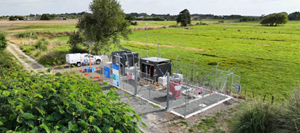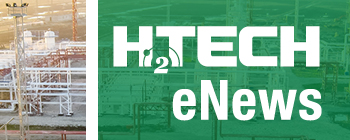News
New Zealand’s first H2 blending pilot reaches 10% milestone
Firstgas, part of Clarus, together with GasNet, Nova Energy, Powerco, and Vector, has reached a key milestone in New Zealand’s first H2 blending pilot. Fourteen households in Te Horo, on the Kāpiti Coast, are now receiving a gas blend containing 10% H2 by volume, (which translates to 3% by energy delivered), through the existing gas distribution network.
James Irvine, GM Future Fuels for Clarus said, “Our energy future will be shaped by a mix of options, and this work helps us understand the option of H2 blending. Reaching the 10% milestone demonstrates the feasibility of using New Zealand’s existing gas infrastructure to transport H2.”
H2 blending involves mixing H2 gas into the existing natural gas supply and is a way to test the pipeline infrastructure and gas appliances that we already have.
“These types of pilots have been done before. Hybrid cars were once seen as a fringe idea. Now, EVs are mainstream but it took early pilots to prove what was possible. This pilot is about building readiness, gathering the evidence, capability and confidence to make more informed energy decisions in the future,” said Irvine.
H2 is recognized internationally as a potentially renewable gas option that can be stored and transported at large scale. This could make it an ideal complement to solar and wind generation and a valuable tool for helping hard-to-electrify sectors, such as high-heat industries, heavy transport, and those already using H2 as a feedstock, to decarbonize.
More than five years of preparation and planning have gone into ensuring the pilot can be delivered successfully, with close monitoring at every stage. The project team has worked closely with WorkSafe New Zealand’s Energy Safety team.
“We were pleased Firstgas engaged with us at an early stage in their preparations, to ensure safety for consumers and the public, as well as workers. This included sharing engineering studies which assess the suitability and safety of the distribution network and installations involved. Because piping blended gas into homes is new under the Gas Regulations 2010, Firstgas applied to us for two regulatory exemptions so the pilot could go ahead. We continue to monitor progress with interest,” said Mark Wogan, WorkSafe’s Energy Safety Manager.
A H2 blend display home has also been established in Te Horo, with appliances using the blended gas for cooking and heating, demonstrating how existing assets perform during the pilot.
Irvine said, “The display home allows us to show what’s possible while we gather evidence to inform the development of renewable gases in New Zealand. It’s not about introducing H2 into every household but about proving that our networks and infrastructure can be ready, if and when H2 is widely available.”
H2 blending is already happening safely in countries including the UK, U.S., Canada, Japan and Australia. In Markham, Ontario, for example, energy company Enbridge is blending up to 5% H2 into its natural gas network that serves over 3,600 customers, including manufacturing plants, municipal buildings and institutional facilities.
While H2 is currently more expensive to produce than natural gas, we hope that costs will fall as global production scales and technology advances.


